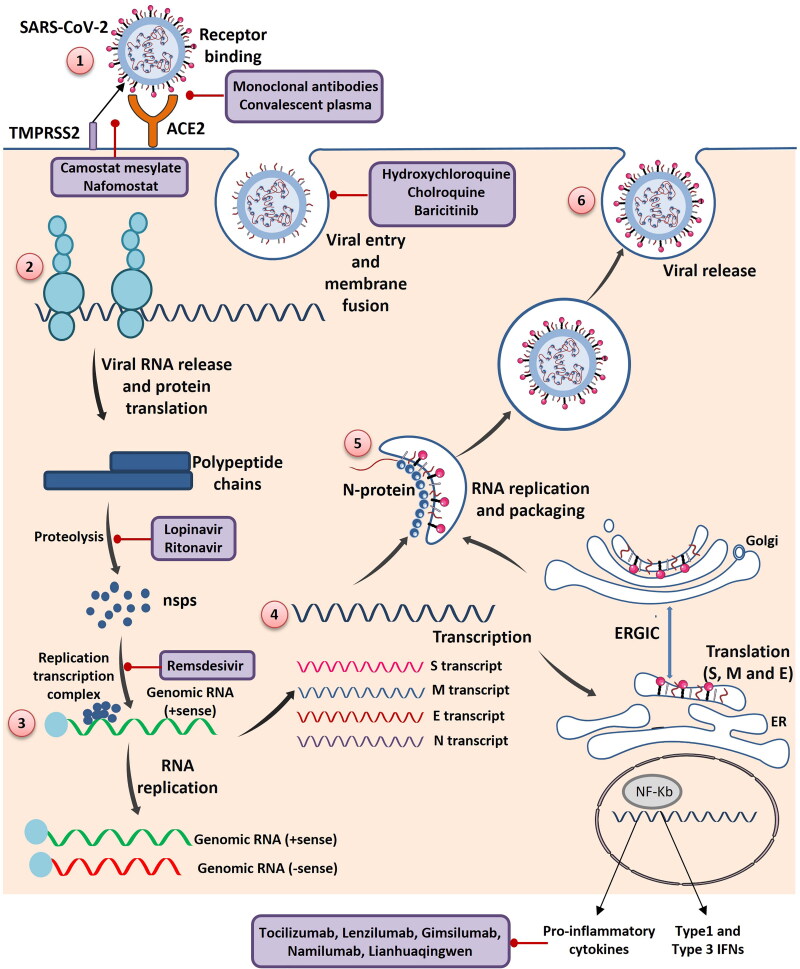Figure 9.
The schematic representation of SARS-CoV-2 life cycle in step wise manner depicting the potential therapeutic approaches against SARS-CoV-2: (1) SARS-CoV-2 enter into the cell by binding to the ACE2 receptor present on the host cell membrane via S protein which mediates viral-host membrane fusion and viral entry. (2) Entry of SARS-CoV-2 results in the uncoating of viral RNA into cytoplasm which then undergoes translation to produce polyproteins pp1a and pp1b, which are further processed by virus-encoded proteinases into individual nonstructural proteins (nsps). (3) Replication transcription complex is formed by some of the nsps. Replication transcription complex uses the (+) stand genomic RNA as template. Following replication (+) stand genomic RNA is produced which becomes the genome of the new viral particle. (4) Subgenomic RNAs synthesized through transcription are translated into viral structural proteins: S (Spike) protein, M (Membrane) protein, E (Envelope) protein, N (Nucleocapsid) protein. (5) N protein combined with the (+) strand genomic RNA to form the nucleoprotein complex. S, E and M proteins enter into endoplasmic reticulum (ER) and transported to Golgi apparatus. The nucleoprotein complex and S, E and M proteins are further assembled in the ER-Golgi intermediate compartment (ERGIC) to form mature virion. (6) Virions are released from the host cells by exocytosis. Many potential therapeutic approaches are considered for the management of COVID-19. These therapeutics act on various steps of the SARS-CoV-2 life cycle. Monoclonal antibodies and Convalescent plasma targets the S proteins of SARS-CoV-2 from interacting with the ACE2 receptor. Camostat mesylate and Nafomostat targets the serine protease (TMPRSS2) and prevents the S protein cleavage which is required for the viral fusion to the host cells. Lopinavir and Ritonavir targets the proteolysis of polypeptide chains. Remsdesivir prevents the replication of SARS-CoV-2 and drugs like Tocilizumab, Lenzilumab, Gimsilumab, Namilumab and Lianhuaqingwen inhibit the pro-inflammatory response.

